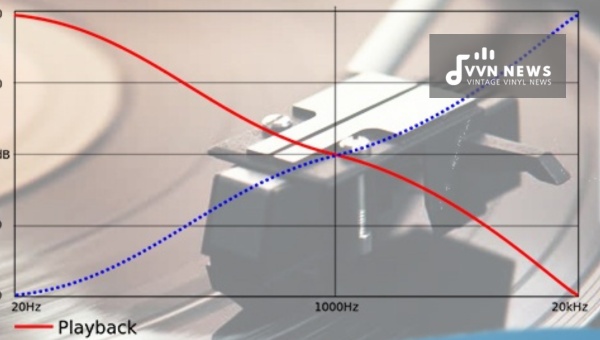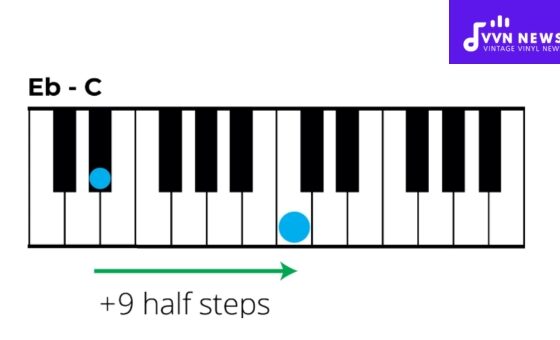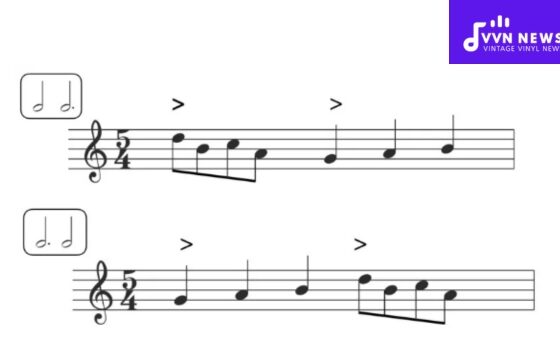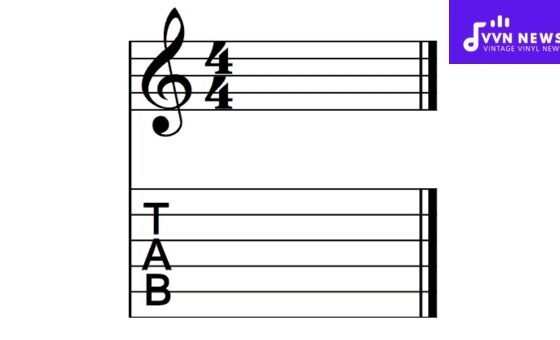As an audiophile and a lover of vintage vinyl, I’ve spent countless hours perfecting my sound system.
A crucial element that often gets overlooked in these setups is the RIAA curve. This seemingly simple concept is fundamental in hearing and perceiving vinyl records.
If you’ve ever been interested in the precise mechanics of your record player or merely want to enhance your auditory experience, understanding the RIAA curve is an imperative step.
The term ‘RIAA curve’ might sound a bit technical to some, but it’s not as complex as it seems.
While there’s plenty of science involved, its essence lies in its practical implication for music enthusiasts.
It’s all about balancing frequency response and playback quality, making vinyl records sound as natural as possible to our ears.
What is the RIAA Curve, and Why is it Important?
The RIAA curve, or the Recording Industry Association of America curve, is a specification for the equalization of gramophone (phonograph) records established by the RIAA.
Here, equalization refers to adjusting various audible frequencies to achieve a balanced playback output.
To understand its importance, we need to consider the production process of a classic vinyl record.
During this process, low frequencies (like bass tones) are reduced, and high frequencies (like cymbals and snares) are amplified.
This allows for narrower grooves on the record, which increases play time and reduces distortion from needle movement in lower frequency ranges.
When we play these records back on a turntable or phonograph, we need to reverse this frequency reduce high ones, and enhance low ones – so that what we hear accurately replicates the original recording.
This is precisely where an RIAA equalized preamplifier comes into play; it corrects these altered frequencies according to the standard RIAA curve.
This curve ensures that our vinyl music sounds as true to life as possible. Without it, even your top-of-the-line sound system wouldn’t give you an authentic musical experience.
Knowing about this hidden hero in our audio systems can truly elevate your understanding of sound quality and influence how you set up your listening station.
Also Read: 19 Best Audio Interfaces For Home & Studio Recording 2025
the History of the RIAA Curve
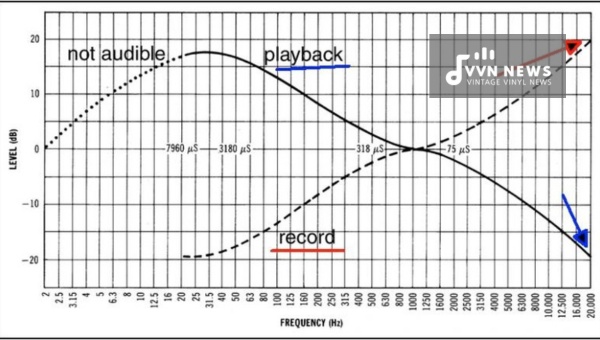
The origins of the RIAA curve trace back to the early 20th century. During this time, each record company had its standards for equalization, resulting in disparate audio quality across vinyl records.
In the 1950s, industry leaders came together to address this inconsistency. Their discussions gave birth to a new universal standard called the New Orthophonic Curve.
However, Columbia Records and RCA Victor, two major industry players, had already developed their curves by then.
Only after numerous meetings was a consensus reached – a curve that borrowed from both Columbia and RCA’s versions while keeping close to New Orthophonic.
Once implemented industry-wide in 1954, it became known as the Recording Industry Association of America curve or the RIAA curve.
This new curve allowed records to carry softer passages and dramatically reduce background noise along with more extended playing times.
The dynamic range increased significantly without adversely affecting groove life or stylus durability.
Since then, any equipment designed for vinyl playback has come equipped with an RIAA equalized phono preamplifier to ensure every frequency is correctly represented according to these standards.
Now, our vinyl records can perform at their best – giving us rich, nuanced music that truly brings recordings to life.
Given its impact on improving sound quality and standardizing recording practices globally, understanding the history of the RIAA Curve is enlightening for any music lover or audio enthusiast.
How Does the RIAA Curve Work?
To understand how the RIAA curve influences our audio experience, let’s delve deeper into its mechanics.
It primarily revolves around two crucial aspects – audio equipment frequency response and equalization role in audio playback.
Exploring the Frequency Response of Audio Equipment
The ‘frequency response’ measures how different audio frequencies are handled by an electronic device within its operating range. It shows how much a system attenuates or amplifies each frequency that goes through it.
Let’s consider a speaker, for instance. If it has an absolute flat frequency response, theoretically, all musical notes will be played at equal volume.
However, in practice, no speaker can produce a flat response due to physical limitations and design compromises.
Signals are often altered as they pass through reproduction devices, leading to variations in the perceived loudness of different tones.
In context to playing vinyl records, we must move past just speakers and consider components like needle cartridges, preamplifiers, and amplifiers. Their collective frequency responses shape what you finally hear.
Also Read: Studio Recording and Podcasting [How To Get Started?]
The Role of Equalization in Audio Playback
Equalization is essentially a way to balance the various frequency components contained in an audio signal—a lot like tweaking bass or treble controls on a stereo but far more complex and precise.
When vinyl records are made, their tracks’ grooves undergo substantial reduction for low-frequency sounds (below 1000Hz) and bolstering for high-frequency sounds (above 1000Hz).
This technique serves dual purposes – disc space economization (since low-frequency grooves consume more space) and noise reduction.
But if you play this modified analog directly through your speakers – bye-bye, Beethoven! So here’s where our hero – the RIAA equalized preamplifier – comes into play.
It does the exact inverse of the earlier modifications. It amplifies the low-pitched notes and tones down high-pitched ones, effectively correcting or “equalizing” the sounds heard through speakers matching with the original recording.
In all, understanding the RIAA curve lies in grasping these two concepts. Consider it like a translation guide between musical intentions and limitations of physical storage media.
The Purpose and Benefits of Implementing the RIAA Curve
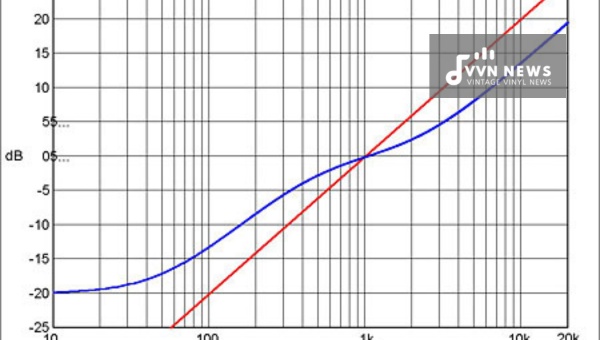
When we start to unravel the essence of the RIAA curve, it’s crucial first to understand its two primary purposes: ensuring optimal sound quality and preserving record durability.
Sound Quality Optimization
For starters, implementing the RIAA curve has a massive and direct impact on our audio quality.
Without diving too deep into the technicalities, here’s an illustration: Imagine you’re enjoying a symphony; undoubtedly, you would expect all instruments to be heard accurately and authentically as if they were playing right before you, correct?
Suppose this symphony is squeezed onto a vinyl record without applying any form of equalization (like cutting down bass frequencies) – it could result in massive grooves that are challenging for a stylus to track.
Your melodies would now be drowned by booming bass and obscured by excessive noise.
On the other end of the spectrum, if we excessively boost high-frequency sounds during encoding without correcting them on playback, our ears could perceive harsh, distorted trebles.
This is where the RIAA curve balance comes in handy – it integrated required equalization standards during recording while ensuring these adjustments are counterbalanced during playback.
Record Durability
When shorter wavelengths (high frequencies) are excessively amplified during recording without equalization, bending them into balance (according to an RIAA curve), can cause faster stylus wear.
Additionally, suppose too much low-frequency content (long-wavelength) is unadjusted.
In that case, it might result in broader grooves that need considerable lateral movement for tracking – further escalating the physical wear on your records over time.
An RIAA-certified preamp or phono stage allows your turntable/cartridge setup to correctly ‘read’ records manufactured after 1954 (when RIAA equalization became standard), enhancing longevity.
Implementing an RIAA curve helps us achieve unparalleled photographic audio fidelity and is vital for safeguarding your beloved record collection’s health.
Appreciating the intricate dance of frequencies at play when dropping the needle on our favorite vinyl can augment our musical journey and deepen our understanding of this timeless format.
Also Read: Direct Monitoring [A Guide To Better Audio Recording]
The Evolution of the RIAA Curve Over Time
The development of the RIAA curve was not an overnight event. The evolution spans several decades and involves numerous competing standards.
Let’s delve deep into this historical progression to understand better how it impacts your current listening experience.
Pre-RIAA Years
Before introducing the RIAA curve, multiple record companies had their proprietary equalization standards, resulting in inconsistencies in audio playback.
High-fidelity (hi-fi) records introduced in the 1940s boasted a dynamic range that phonographs couldn’t yet reproduce.
To overcome this, these records featured a pre-emphasis on higher frequencies during recording and a corresponding de-emphasis upon playback.
Manufacturers like RCA Victor and Columbia Records had specific curves, quickly leading to a mounting problem – reproduction equipment would only accurately play records designed for that particular curve.
Owning different record brands meant owning different sets of playback equipment, which was far from ideal for music lovers.
Birth of the RIAA Curve
In 1952, seeing an industry-wide need for an agreed-upon standard, the Recording Industry Association of America (RIAA) stepped in.
They proposed a standardized equalization curve – now known as the RIAA curve – to unify the diverse practices across manufacturers.
The newly introduced RIAA curve wasn’t necessarily better than other curves but promised uniformity across all records.
Since its inception, it has become universally accepted in the majority over other competing curves such as CCIR and NAB.
Today, nearly all stereo vinyl records are mastered with an RIAA equalization curve before production & duplication.
When setting up your sound system with your turntable or phonograph preamp for optimal playback experience, ensure your device adheres to the RIAA standard for ensuring precise audio reproduction from vinyl records.
Remember that while having expensive equipment can elevate your listening experience, understanding the importance and application of the RIAA curve is equally crucial.
As you continue on this journey towards perfecting your hi-fi audio system, appreciating the history and technical advancements like the RIAA often deepens one’s satisfaction with one’s listening experience.
Also Read: How To Soundproof A Room For Studio Quality Recordings? 2025
Common Misconceptions About the RIAA Curve Debunked
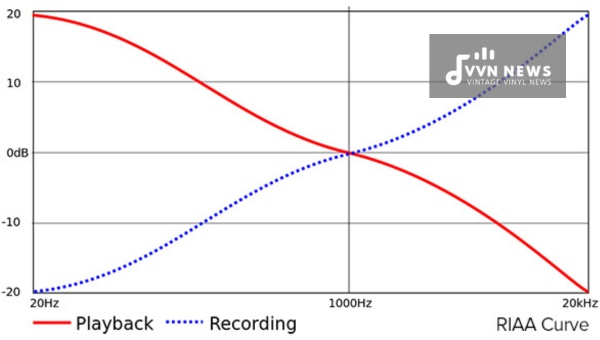
There’s a lot of information on RIAA curves, and, like any other complex topic, misconceptions inevitably arise.
Let’s take a moment to dispel some common misunderstandings about the role and application of the RIAA curve.
Misconception 1: All Vinyl Records Adhere to the RIAA Curve
Despite the widespread adoption of the RIAA standard after 1954, some records—particularly older ones—may adhere to different equalization standards.
This can significantly impact how those records sound when played back on modern devices designed with the RIAA curve in mind.
Misconception 2: The RIAA Curve Is Only Relevant for Vinyl Playback
Though the most talked about about vinyl, it’s incorrect to think that concerns about equalization aren’t applicable beyond turntables.
For example, in digital recording or broadcasting systems, similar principles of equalization apply to compress audio data efficiently without distorting its quality.
Misconception 3: Your Turntable or Preamp Have No Effect on The RIAA Curve
Turntables or preamps may be only part of a passive record-playing process and bear no influence on achieving an accurate rendition of the RIAA curve.
In reality, however, quality, age, and equipment maintenance are crucial in accurately decoding Equalized audio into its pure form.
Misconception 4: An Accurate RIAA Curve Guarantees Perfect Sound Replication
It is easy to assume that a perfectly adhered-to standard, such as an accurate RIAA curve, would result in flawless audio reproduction.
Yet our human hearing isn’t mathematically perfect and often varies among individuals; hence, even with ideal curve representation, there will always be some level of subjectivity to sound intricacies.
Misconception 5: All Modern Amplifiers Can Decipher the RIAA Curve
Several amplifier models today have a built-in ‘PHONO’ stage that adheres to the RIAA curve. Still, several other amplifier types, even modern ones, may not have this feature.
You would need an external RIAA preamplifier to play vinyl records on such amplifiers.
Understanding these complexities and common misconceptions about the RIAA curve fosters a deeper appreciation for audio technology and empowers us to make more informed decisions regarding our sound equipment.
This knowledge can create a more pleasing and lifelike auditory experience.
Also Read: Recording Studio Cables 2025 [Everything You Need to Know]
Tips and Techniques for Optimizing Audio Playback Using the RIAA Curve
Given the crucial role the RIAA curve plays in delivering optimal sound from our beloved vinyl records, it’s worth knowing a few tips and tricks to ensure its proper application for top-notch audio quality.
Choose Your Equipment Wisely
Selecting devices that observe the RIAA equalization curve is essential. Many modern turntables have a built-in phono preamp that applies this curve, so you don’t need to worry about it.
But you may need an external phono preamplifier if you own a vintage turntable or your model doesn’t have a built-in phono stage.
Implement Appropriate Setting Adjustments
Confirm your turntable settings align with the RIAA specifications; this typically includes values like gain (volume), capacitance, and resistance, which can impact sound output if incorrectly set.
If your device features tone control settings, these should be flat to preserve the original sonic representation.
Maintenance Matters
Ensure regular phonograph needle (stylus) maintenance, as its condition can affect frequency response and influence how effectively the RIAA curve is applied.
Keeping other components like slip mats or tonearms at peak performance can also bring out the best in your records.
Understanding these concepts will help you make informed decisions regarding your equipment and setups.
Remember: even though digitized music has become mainstream now, there’s something incomparable about hearing sounds emitted from vinyl discs faithfully following an RIAA curve.
FAQs About RIAA Curve
What does the RIAA equalization curve refer to?
The RIAA curve, named after the Recording Industry Association of America, is a technical specification for the frequency response of vinyl records and playback equipment.
Why do vinyl records need RIAA equalization?
Vinyl records need RIAA equalization to balance high and low frequencies. This ensures an authentic sound close to the original recording.
How does an RIAA equalized preamplifier work in a turntable setup?
An RIAA equalized preamplifier corrects the altered frequencies in a vinyl record by reducing high frequencies and enhancing low ones according to the standard RIAA curve.
Can I use a turntable without an RIAA preamp?
While possible, your records wouldn’t sound right. An RIAA preamp appropriately balances frequency output, producing a clear and authentic sound.
How has the use of the RIAA Curve evolved?
The core principles of the RIAA Curve have remained consistent. However, advancements in technology have improved its precision and quality over time.
Conclusion
The RIAA curve is formative in providing listeners with an accurate and nuanced audio experience.
Without it, the detailed expression imbued within every musical note might be lost, leaving a shadow of the artist’s original vision.
We must laud this sonic sculptor for its invisible yet indispensable presence in our audio devices.
As we continue exploring soundscapes, let’s further recognize the RIAA curve for its pivotal role in bringing life and depth to our beloved vinyl records.
